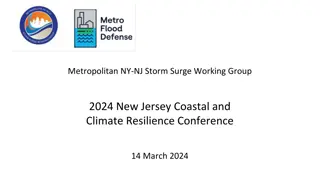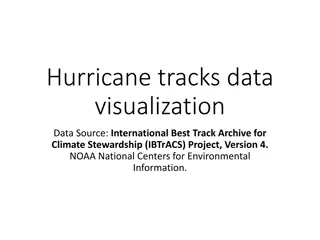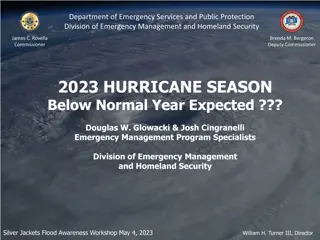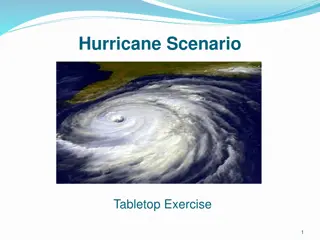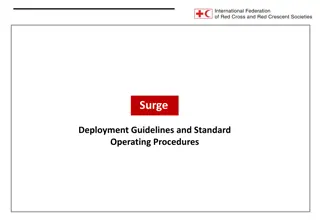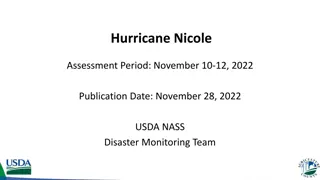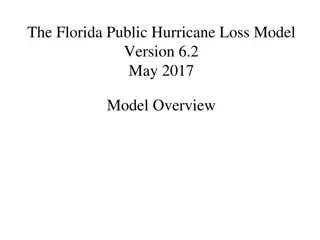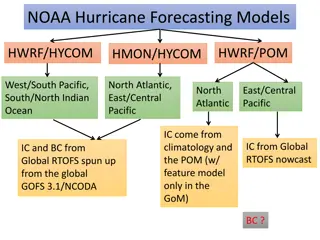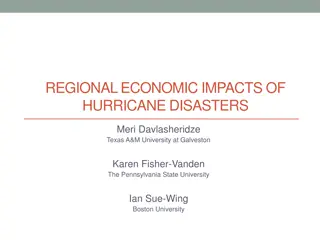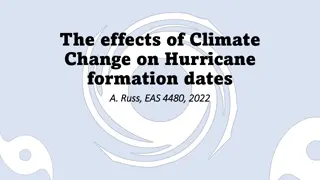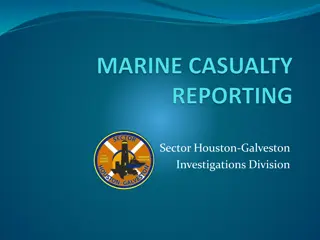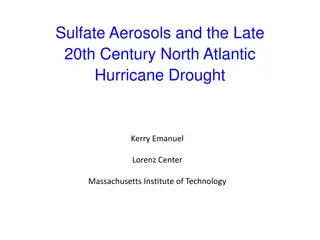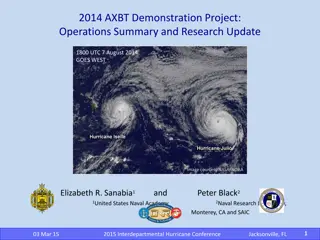Impact of Hurricane Ike and Strategies for Storm Surge Protection in Houston/Galveston
Council Member Dave Martin discussed the devastating effects of Hurricane Ike on the environment, particularly focusing on coastal habitat loss, debris accumulation, and oyster reef destruction in Galveston Bay. The presentation highlighted the urgent need for implementing a coastal barrier, known as the Ike Dike, to protect against future storm surges and mitigate environmental damages caused by natural disasters.
Download Presentation

Please find below an Image/Link to download the presentation.
The content on the website is provided AS IS for your information and personal use only. It may not be sold, licensed, or shared on other websites without obtaining consent from the author. Download presentation by click this link. If you encounter any issues during the download, it is possible that the publisher has removed the file from their server.
E N D
Presentation Transcript
Council Member Dave Martin Town Hall Meeting, October 13, 2016 Storm Surge Protection for Houston/Galveston Hurricane Ike Sprawls over Gulf of Mexico, September 12, 2008 (NOAA)
The overall strategy is to keep the ocean surge out of Galveston Bay by using a coastal barrier (the Ike Dike) Houston Ship Channel High Island Bolivar Roads Existing Seawall Coastal Spine Intracoastal Waterway San Luis Pass
I IKE KE S SURGE URGE D DAMAGES AMAGESTO TOTHE THE E ENVIRONMENT NVIRONMENT Damages to Galveston Bay that Hurricane Ike inflicted 1. Coastal habitat loss 2. Debris 3. Oyster reef destruction Intense coastal changes/damages through erosion, re-deposition of sediments, saltwater intrusion caused by increased water levels, waves, and currents.
Approximate extent of dead vegetation as a result of Ike surge inundation
I IKE KE S SURGE URGE D DAMAGES AMAGESTO TOTHE THE E ENVIRONMENT NVIRONMENT - - D DEBRIS EBRIS The debris that Ike washed into Galveston Bay has been scattered across the Bay or left along the shoreline. Much of the debris from the Bolivar ended up in large debris piles 20 miles away in Chambers County. By 2009, 23,442 cubic yards of debris removed from Galveston Bay, Trinity Bay, and East Galveston Bay.
The overall strategy is to keep the ocean surge out of Galveston Bay by using a coastal barrier (the Ike Dike) I IKE KE S SURGE URGE D DAMAGES AMAGESTO TOTHE THE E ENVIRONMENT NVIRONMENT - - D DEBRIS EBRIS
I IKE KE S SURGE URGE D DAMAGES AMAGESTO TOTHE THE E ENVIRONMENT NVIRONMENT - - O OYSTER YSTER R REEFS EEFS D DESTRUCTION ESTRUCTION Oyster reefs were covered by large amounts of debris and sediment that hurricane Ike brought into the bay 60percent of reefs in Galveston Bay and 80 percent of reefs in east bay were ruined by sediment deposition over reefs. Some reefs in eastern Galveston Bay were buried by over 31cm of sediments. Galveston Bay lost more than 6,000acres of oyster habitat as a direct result of Ike. The approximate cost to return the oyster reefs to pre-hurricane status is $300 million. It will take 20 to 25 years to recover.
E ENVIRONMENTAL NVIRONMENTAL C CONSIDERATIONS ONSIDERATIONS N NEEDED EEDED A paradigm shift in design! Why not use environmental considerations as design input upfront instead of solely using surge suppression factors and then looking at environmental impacts after-the-fact? For more information, please contact Dan Seal, Bay Area Houston Economic Partnership, (832) 536-3255, www.bayareahouston.com


